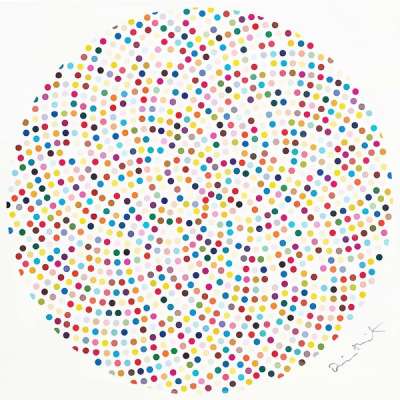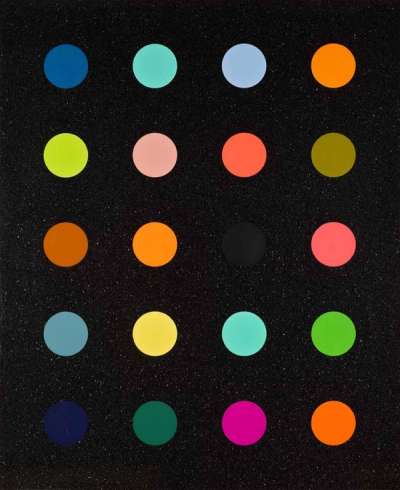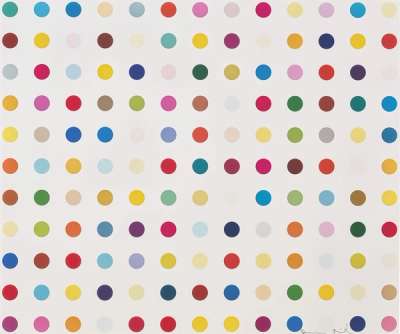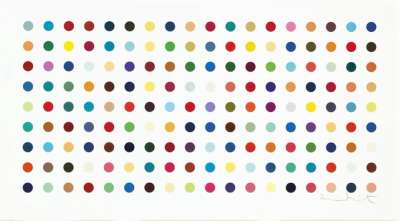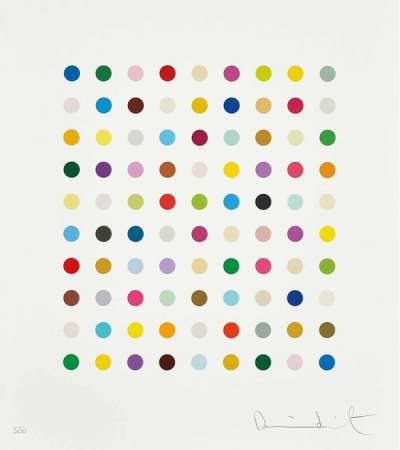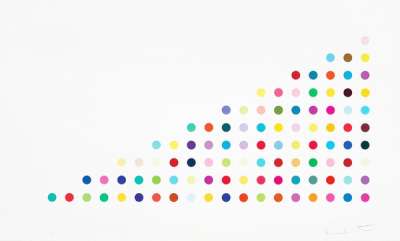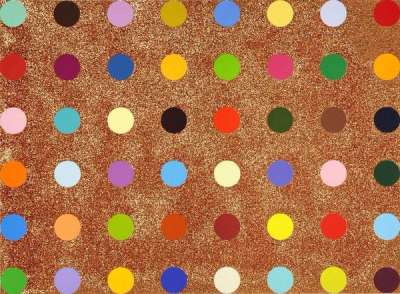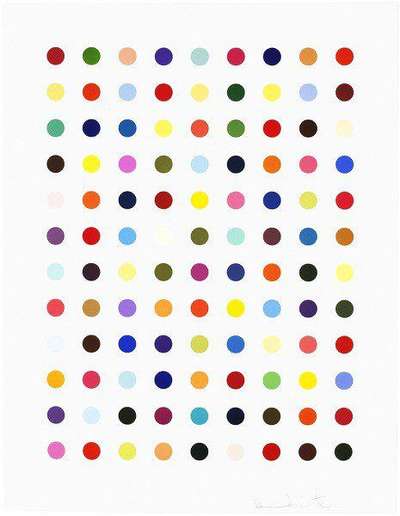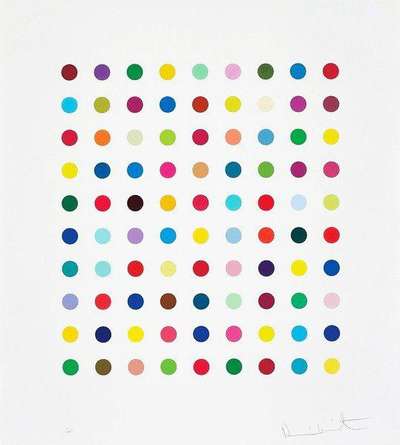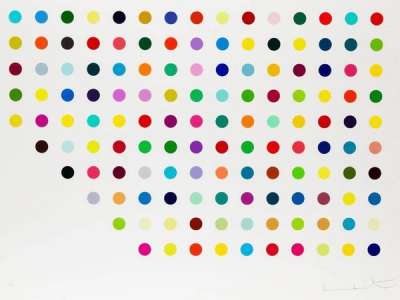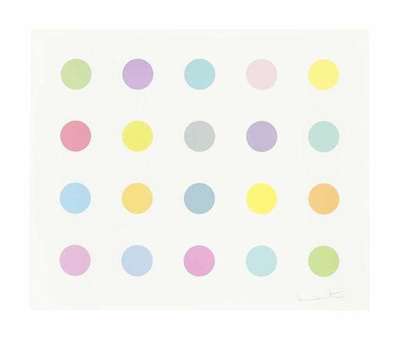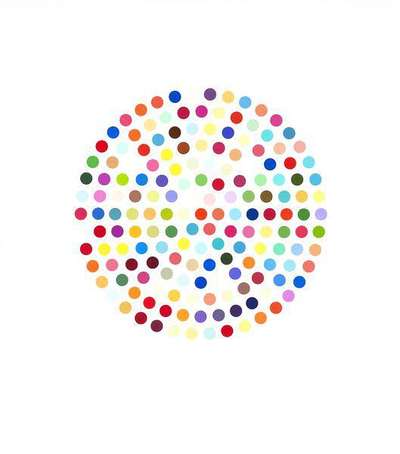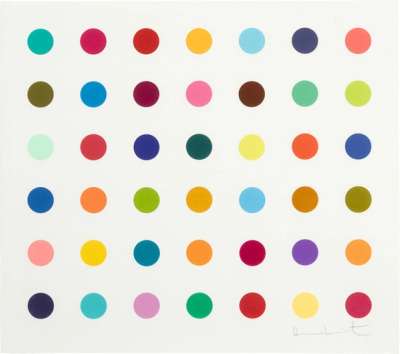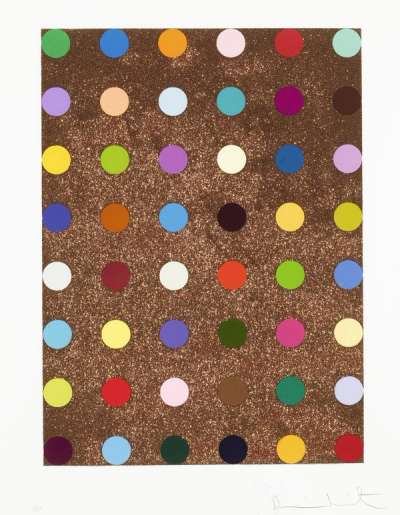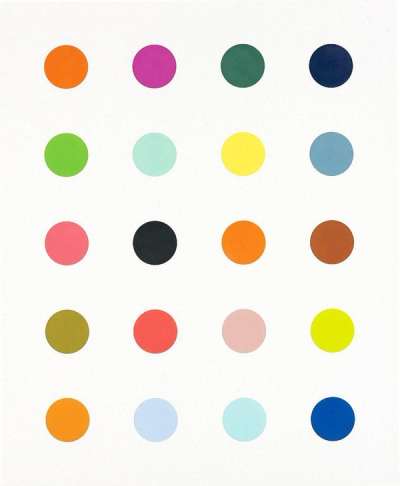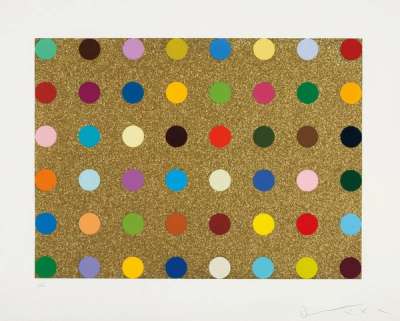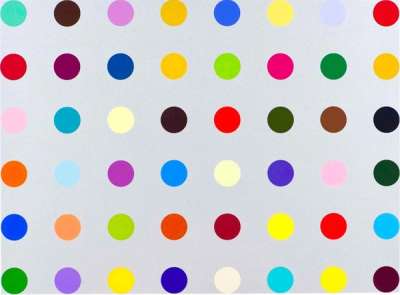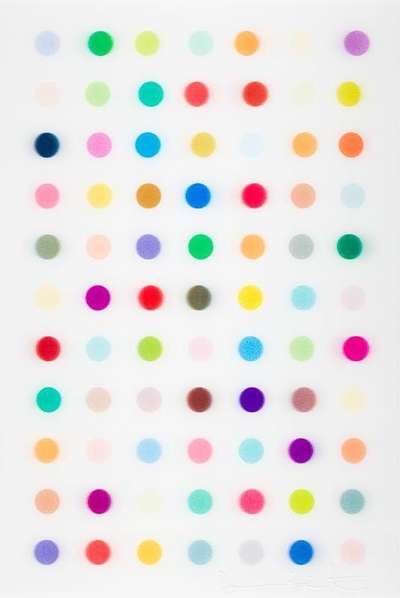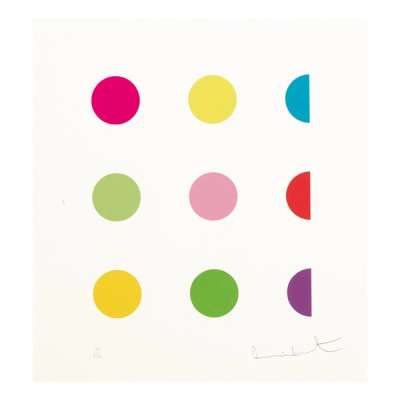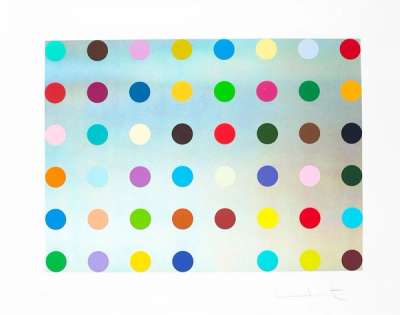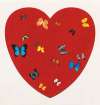Spots
Damien Hirst's Spot paintings and prints are universally known, with their precise gridded composition of colourful circles. His ambition is to create art ‘like a machine’, yet each spot’s unique colouration gives the works themselves an irreducible identity—a DNA. They reflect Hirst’s ambition to entangle art with science.
Damien Hirst Spots For sale
Spots Value (5 Years)
Works from the Spots series by Damien Hirst have a strong market value presence, with 667 auction appearances. Top performing works have achieved standout auction results, with peak hammer prices of £61270. Over the past 12 months, average values across the series have ranged from £3745 to £26424. The series shows an average annual growth rate of 0.85%.
Spots Market value
Auction Results
| Artwork | Auction Date | Auction House | Return to Seller | Hammer Price | Buyer Paid |
|---|---|---|---|---|---|
 Phenformin Damien Hirst Signed Print | 26 Oct 2025 | SBI Art Auction | £3,400 | £4,000 | £4,700 |
 Lysergic Acid Diethylamide (LSD) Damien Hirst Signed Print | 23 Oct 2025 | Sotheby's New York | £12,750 | £15,000 | £21,000 |
 Cinchonidine Damien Hirst Signed Print | 19 Sept 2025 | Phillips London | £6,800 | £8,000 | £11,500 |
 Valium Damien Hirst Signed Print | 19 Sept 2025 | Phillips London | £11,050 | £13,000 | £18,000 |
 Ellipticine Damien Hirst Signed Print | 24 Jun 2025 | Phillips New York | £9,350 | £11,000 | £15,000 |
 Opium Damien Hirst Signed Print | 17 Apr 2025 | Phillips New York | £4,165 | £4,900 | £6,500 |
 Methamphetamine Damien Hirst Signed Print | 16 Apr 2025 | Christie's New York | £21,250 | £25,000 | £35,000 |
 Diacetoxyscirpenol Damien Hirst Signed Print | 16 Apr 2025 | Christie's New York | £19,550 | £23,000 | £30,000 |
Sell Your Art
with Us
with Us
Join Our Network of Collectors. Buy, Sell and Track Demand
Meaning & Analysis
Universal, timeless and immediately recognisable, when you think of Damien Hirst, chances are his Spots prints are what spring to mind. National and international acknowledgment was to follow, 7 years later Hirst would win the Turner Prize and 30 years on from that he is recognised as one of the most influential artists of the last half-century.
His work has come to be iconic in British culture and is best known for its recurring, unblinking, confrontational and often sardonic dialogue with death, mortality and the human condition. This could be in the guise of a 14-foot long tiger shark in a tank of formaldehyde (The Physical Impossibility of Death in the Mind of Someone Living, 1991), a four-part sculpture of a bisected cow and calf (Mother and Child Divided, 1993) or a human skull studded with 8,601 diamonds (For the Love of God, 2007).
His Spots paintings and prints have become universally recognised, to the point where spots en-masse are synonymous with the artist. Their application and the theory behind it have helped to redefine international expectations of British art and contemporary art in general. The iconic nature of such work is in part because Hirst, almost more than any other artist of the ’90s, became familiar via the media, particularly following his Turner Prize win in 1995, and it is a situation that, at least in some ways, he relishes and uses to his own ends.
Hirst is one of the most ambitious artists of all time. The Spots works are often considered a late addition to his visual language but they in fact occur prior to any sort of serious recognition. It was 2 years before his seminal group show, back in 1986, that Hirst painted some loose hand-painted Spots on board. This was followed by his first Spots work on canvas Untitled (with Black Dot) in 1988. At Freeze, Hirst painted two near-identical arrangements of coloured spots onto the wall of the warehouse. He called the works Edge and Row.
